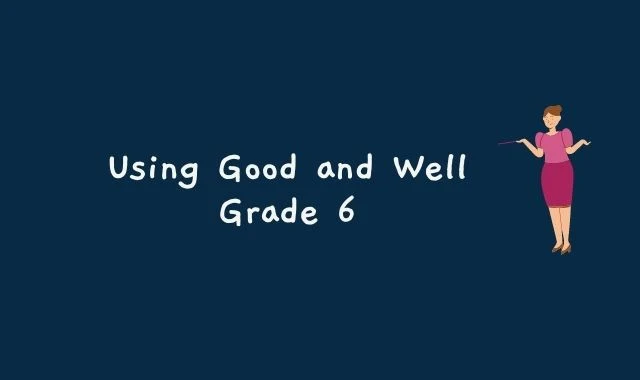Using Good and Well - Grade 6
Good vs. Well: How to Use Them Correctly in 6th Grade
Do you know the difference between good and well? Do you know how to use them correctly in your writing and speaking? If not, don't worry. Many 6th graders struggle with these words, but they are very important to master. Using the wrong word can change the meaning of your sentence and confuse your reader or listener. In this post, we will teach you how to use good and well correctly and avoid common mistakes. Let's get started!
Section 1: Good vs. Well
Good and well are both adjectives, which means they describe nouns or pronouns. However, they are not interchangeable. Good means "of high quality or standard" or "having a positive or desirable quality". For example:
- - She is a good student. (She has a positive quality of being a student.)
- - He did a good job. (He performed his job with high quality or standard.)
- - That was a good movie. (The movie had a positive or desirable quality.)
Well means "in a satisfactory or proper way" or "in good health". For example:
- - She speaks English well. (She speaks English in a satisfactory or proper way.)
- - He is feeling well today. (He is in good health today.)
- - That went well. (That happened in a satisfactory or proper way.)
Sometimes, well can also be an adverb, which means it modifies verbs, adjectives, or other adverbs. When well is an adverb, it means "to a great extent or degree" or "in a skillful or effective way". For example:
- - She knows him well. (She knows him to a great extent or degree.)
- - He plays soccer well. (He plays soccer in a skillful or effective way.)
- - She sings very well. (She sings in a very effective way.)
To practice using good and well as adjectives, fill in the blanks with the correct word:
- - The cake tastes ___________. (good/well)
- - He looks ___________ in that suit. (good/well)
- - She did ___________ on the test. (good/well)
<->
Section 2: Common Mistakes to Avoid
One of the most common mistakes that 6th graders make when using good and well is confusing them with each other. Here are some examples of incorrect sentences and how to fix them:
- - Incorrect: She did good on the test.
- Correct: She did well on the test.
Explanation: In this sentence, we need an adverb to modify the verb did, not an adjective. Therefore, we use well instead of good.
- - Incorrect: He looks well in that suit.
- Correct: He looks good in that suit.
Explanation: In this sentence, we need an adjective to describe the pronoun he, not an adverb. Therefore, we use good instead of well.
- - Incorrect: The cake tastes well.
- Correct: The cake tastes good.
Explanation: In this sentence, we need an adjective to describe the noun cake, not an adverb. Therefore, we use good instead of well.
To practice avoiding these mistakes, correct the following sentences:
- - She sings good.
- - He feels good today.
- - They played well.
Section 3: Tricky Situations
Sometimes, using good and well can be tricky because they can have different meanings depending on the context. Here are some situations where you need to pay attention to how you use them:
- With linking verbs: Linking verbs are verbs that connect the subject with another word that describes it, such as be, seem, appear, sound, etc. For example:
- - She is happy. (The linking verb is connects the subject she with the adjective happy.)
- - He seems tired. (The linking verb seems connects the subject he with the adjective tired.)
When you use a linking verb, you need to use an adjective after it, not an adverb. Therefore, you use good instead of well. For example:
- - She is good at math. (The linking verb is connects the subject she with the adjective good.)
- - He sounds good on the phone. (The linking verb sounds connects the subject he with the adjective good.)
However, there is one exception: when you use the linking verb feel, you can use either good or well depending on what you mean. If you mean "in good health", you use well. If you mean "happy or satisfied", you use good. For example:
- - I feel well today. (I am in good health today.)
- - I feel good about myself. (I am happy or satisfied with myself.)

